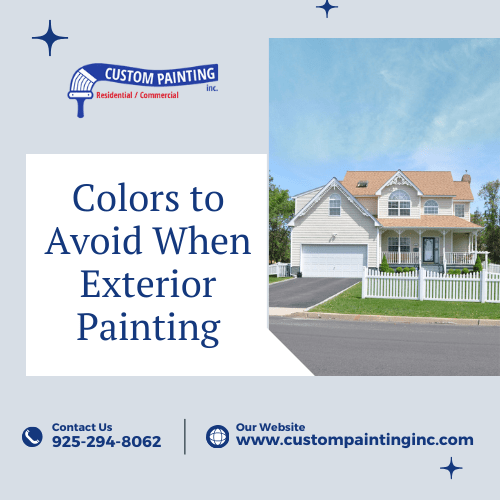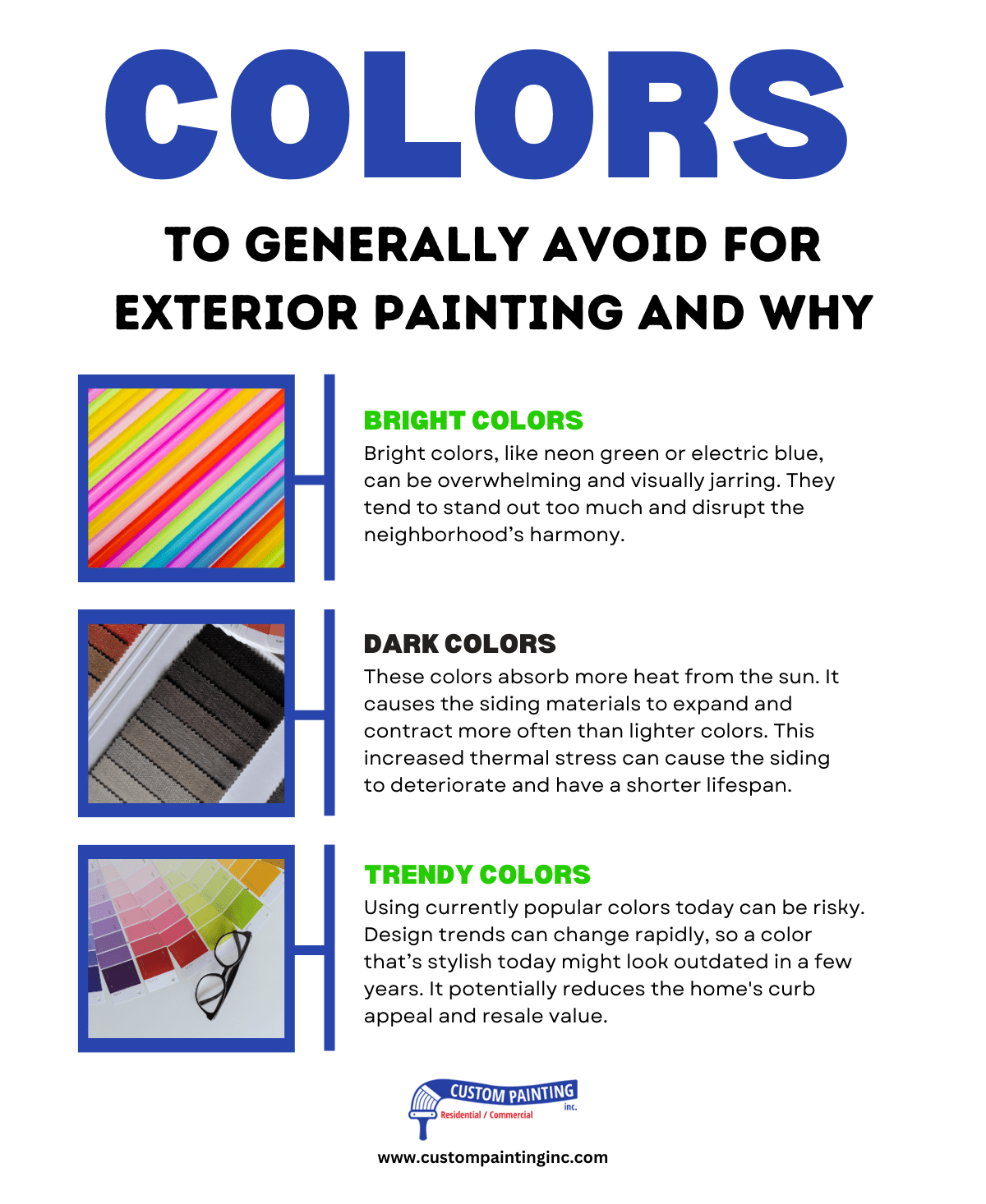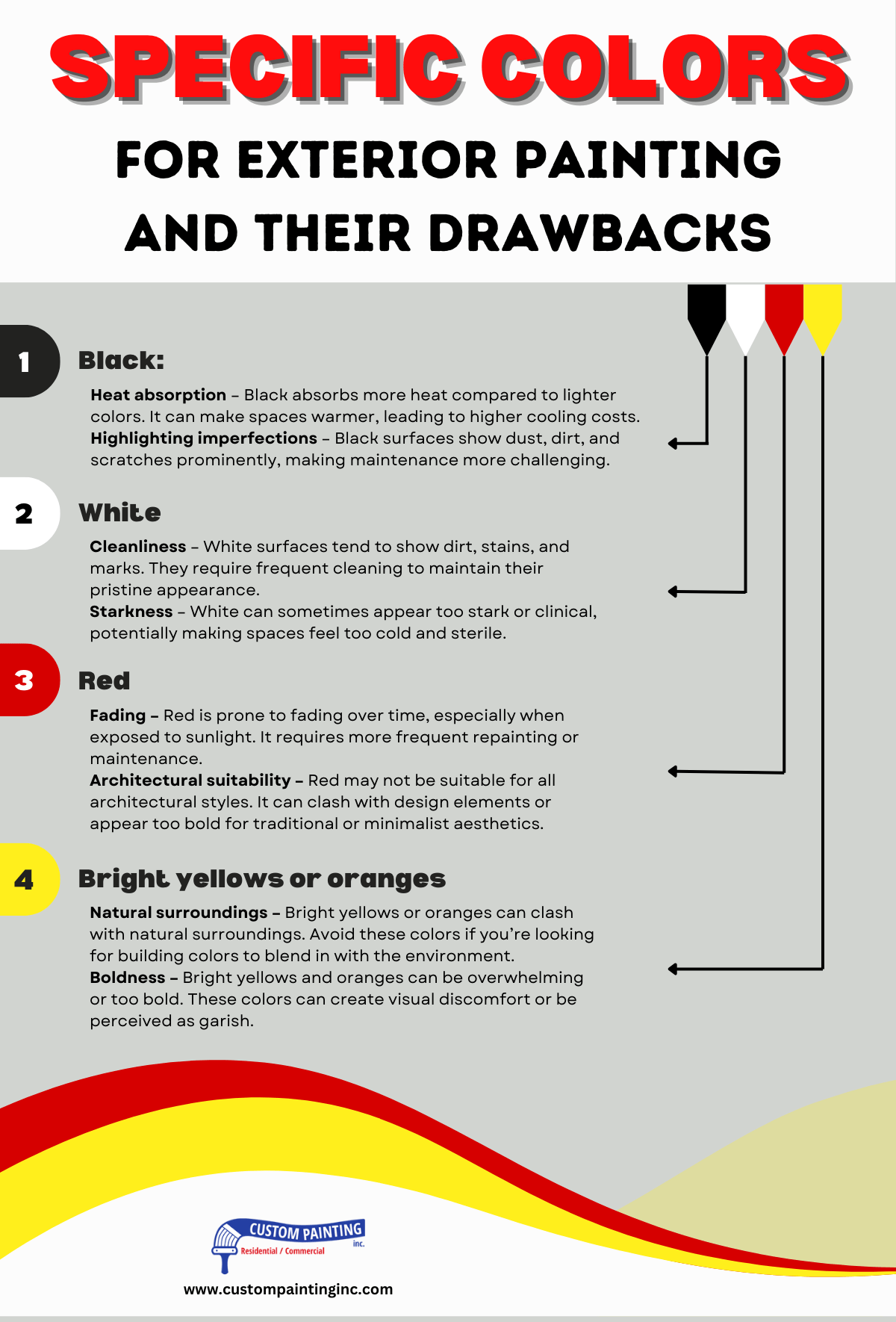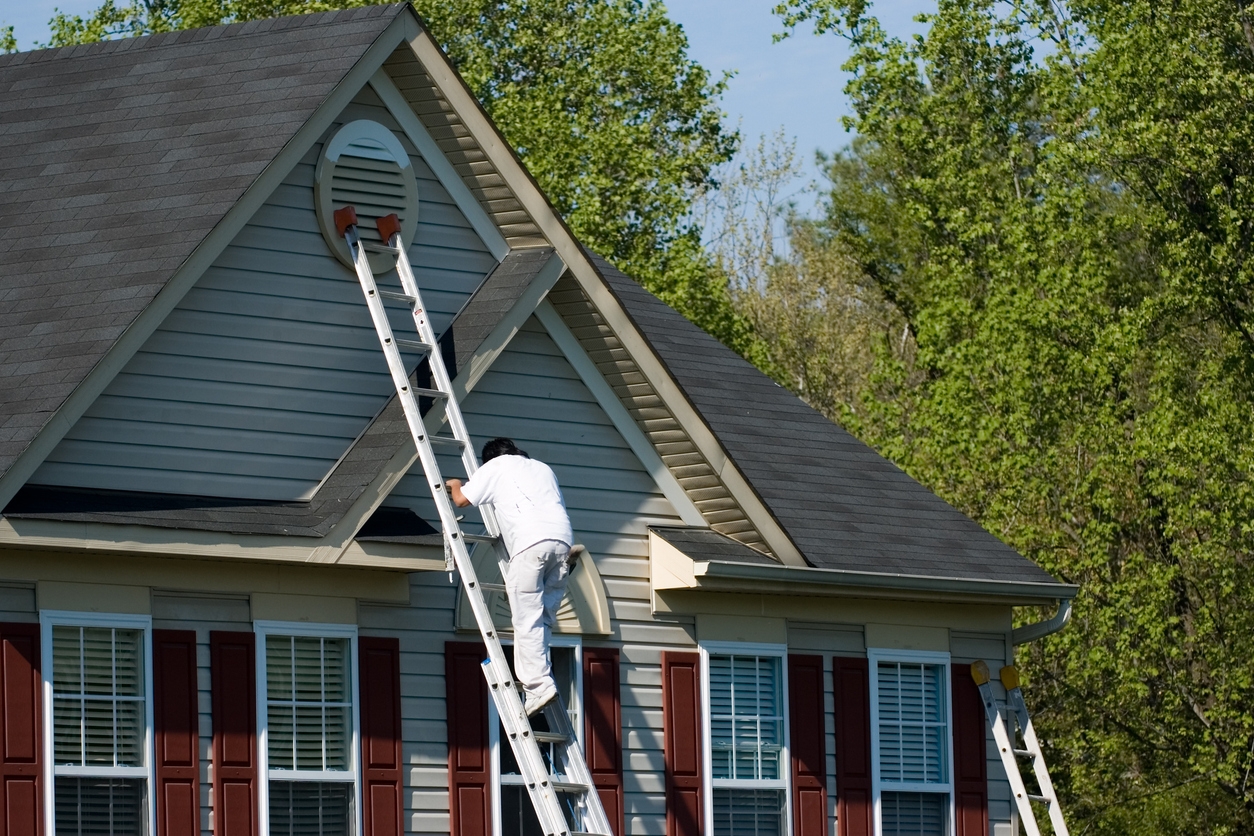When choosing paints for an exterior painting job in Walnut Creek, the right colors matter. It significantly impacts a home’s curb appeal and creates a positive first impression. The right colors can enhance a home’s architectural features. They also complement the surrounding environment and reflect the homeowners’ style. Well-chosen colors can make a home appear more welcoming and well-maintained, potentially increasing its market value.
Conversely, the wrong color choices can detract from a Concord home’s appearance, making it look out of place or unappealing. Poor color combinations or overly bold selections might clash with the neighborhood aesthetic. It can also decrease the property’s value and deter potential buyers. Inappropriate colors can highlight a home’s architectural flaws and surface defects instead of masking them.
Considerations before choosing exterior paint colors
Impact of climate and sunlight exposure on paint colors
- Climate – Humid or rainy climates can cause mold and mildew growth on exterior paint, requiring a moisture-resistant topcoat. In contrast, dry climates might cause paint to crack or fade faster.
- Sunlight exposure – Intense sunlight can cause paint colors to fade over time, especially darker shades. UV radiation breaks down the paint’s chemical bonds, reducing vibrancy. Light colors, though, reflect more sunlight and retain their appearance longer.
Local regulations or homeowners’ association (HOA) rules
Many local governments and HOAs have specific guidelines on exterior paint colors. The goal is to maintain a cohesive look within neighborhoods. These rules might restrict bright, bold, or unconventional colors. Instead, homeowners must choose from a pre-approved palette to ensure uniformity and preserve property values.
Importance of considering the architectural style and era of the home
An Antioch home’s architectural style and era influence appropriate color choices. Traditional styles, like Victorian or Colonial homes, often have historically accurate color schemes reflecting their period. On the other hand, modern homes may support a broader range of colors.
Matching the paint color to the home’s architectural style helps preserve its aesthetic integrity and enhance its overall appeal.
Colors to generally avoid and why
- Bright colors – Bright colors, like neon green or electric blue, can be overwhelming and visually jarring. They tend to stand out too much and disrupt the neighborhood’s harmony. Due to their high pigment concentration, these colors are also prone to fading more quickly, resulting in a less vibrant and uneven appearance over time.
- Dark colors – These colors absorb more heat from the sun. It causes the siding materials to expand and contract more often than lighter colors. This increased thermal stress can cause the siding to deteriorate and have a shorter lifespan. Moreover, dark colors can make homes feel less inviting and highlight surface flaws.
- Trendy colors – Using currently popular colors today can be risky for Vallejo area. homeowners. Design trends can change rapidly, so a color that’s stylish today might look outdated in a few years. It potentially reduces the home’s curb appeal and resale value. Choose timeless, classic colors offering broader appeal and long-term attractiveness.
Specific colors and their drawbacks
1. Black:
- Heat absorption – Black absorbs more heat compared to lighter colors. It can make spaces warmer, leading to higher cooling costs.
- Highlighting imperfections – Black surfaces show dust, dirt, and scratches prominently, making maintenance more challenging.
2. White
- Cleanliness – White surfaces tend to show dirt, stains, and marks. They require frequent cleaning to maintain their pristine appearance.
- Starkness – White can sometimes appear too stark or clinical, potentially making spaces feel too cold and sterile.
3. Red
- Fading – Red is prone to fading over time, especially when exposed to sunlight. It requires more frequent repainting or maintenance.
- Architectural suitability – Red may not be suitable for all architectural styles. It can clash with design elements or appear too bold for traditional or minimalist aesthetics.
4. Bright yellows or oranges
- Natural surroundings – Bright yellows or oranges can clash with natural surroundings. Avoid these colors if you’re looking for building colors to blend in with the environment.
- Boldness – Bright yellows and oranges can be overwhelming or too bold. These colors can create visual discomfort or be perceived as garish.
The effect of color on resale value
Impact of unusual exterior color choices on resale value
- Narrower buyer pool – Unusual or bold exterior colors can significantly reduce the number of potential buyers. Many buyers prefer neutral colors and may find unconventional choices off-putting.
- First impressions – A home’s exterior color contributes to its curb appeal. Unconventional colors may create a negative first impression, making the property seem less desirable.
- Cost of repainting – Potential buyers may consider the cost and effort required to repaint the house to a more acceptable color. This can lead to lower offers or decreased interest.
- Neighborhood compatibility – Homes with colors that clash with the neighborhood’s general aesthetic can be seen as less desirable. They can also be perceived as a bad fit for the area.
Tips for choosing broadly appealing exterior colors
- Stick to neutrals – Choose neutral colors, like beige, white, gray, and taupe. They have a timeless appeal and are safe choices to match various tastes.
- Complement the surroundings – Consider your home’s style and its natural surroundings. Earth tones are suitable in wooded areas, while lighter shades work well in urban settings.
- Follow local trends – Consider the common color schemes in your Bay area and Lafayette neighborhood. Colors that blend well with nearby homes will be more acceptable to potential buyers.
- Consider accents – While the main color should be neutral, use bolder colors for trim, shutters, and doors. They can add personality without overwhelming buyers.
- Consult professionals – Color consultants can offer valuable insights into what colors suit your home. If you plan to sell your home, real estate agents can help you choose colors that buyers in your market prefer.
Alternative recommendations
Safer exterior color choices
- Neutral tones – Shades like beige, gray, and taupe are versatile and timeless. They can blend well with various architectural styles and landscapes.
- Earthy colors – Choose colors inspired by nature, such as greens, browns, and tans. These harmonize with most landscapes and create a cohesive look.
- White and off-white – These classic and clean colors can make a home appear larger and more inviting. They can also complement any design and landscape.
Testing paint colors
- Small test patches – Paint small sections of the exterior in different areas. See how the colors look in various lighting conditions throughout the day.
- Use paint samples – Purchase sample sizes of your chosen colors rather than full gallons to minimize waste and cost.
- Observe for a few days – Allow the test patches to remain for several days. Observe how the color changes with weather and lighting.
- Consider surroundings – Evaluate how the color looks with the roof, driveway, and landscaping to ensure a cohesive appearance.
Conclusion
Avoid specific colors when choosing paints for your home’s exterior. It is due to climate, architectural style, maintenance needs, or neighborhood or HOA (homeowners’ association) regulations. Consider the long-term implications and your preferences to ensure lasting satisfaction. Consult with a professional painter, designer, real estate agent, or HOA when uncertain. They can provide valuable guidance and ensure the best results.
You can rely on Custom Painting, Inc.’s expert color consultants and painters to help you choose the best color for your home’s exterior. Call us at 925-686-0903 or complete our contact form for a free consultation and estimate.





